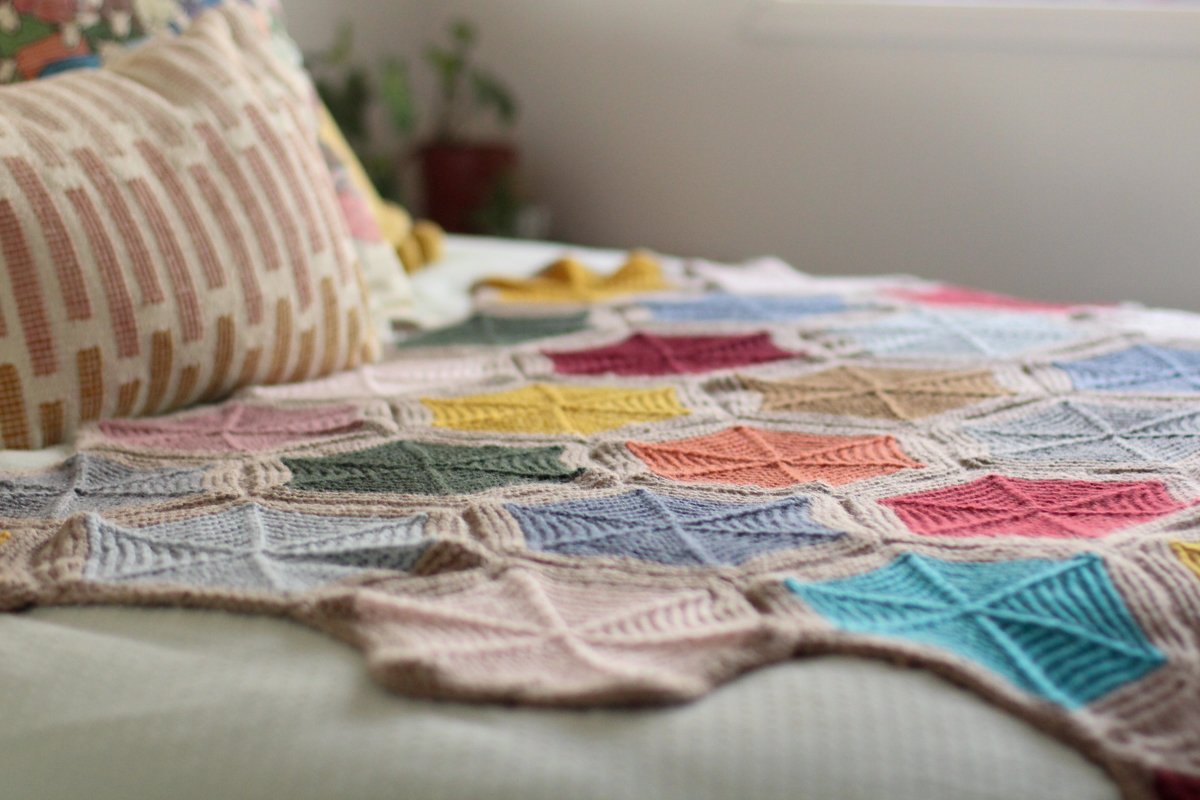Finished Project: Skep Blanket
Finishing a large project always feels a little odd. This blanket took me 8 months from start to finish - the fastest I’ve ever knit a blanket before. With large projects, I always mentally settle in for the long journey. I enjoy knitting blankets as it’s nice to have something there to pick up and knit on whenever, in between other projects without having to stop and start.
You might remember when I started Skep last year. The blanket is made up of 36 hexagons that are individually knit, and then knitted together at the end to form the modular blanket.
The nice thing about the motifs being knit one by one is there is a sense of accomplishment with each finished hexie.
When I was choosing my colours for this blanket I simply grabbed a bunch that I loved. I ended up using more colours than the pattern called for, and I knit odd amounts of different colours.
When it came to putting the blanket together it did take me a bit longer to arrange the colours, as I had more of some hexagons than others, so I couldn’t just follow the layout included with the pattern.
I spent a while arranging the colours, laying them out and coming backwards and forwards to see if I was happy with them. Once the arrangement was right I snapped a photo, giving me something to reference whilst piecing it together.
I’m really happy with the final placement of all of the colours, and the odd amounts of some colours adds to the overall patchwork look.
I also really like the way the edges aren’t straight, as the hexagons create a modular finish.
To join the hexagons together you first create 6 strips of hexagons. The pattern called for the three-needle bind-off for joining, a technique I usually love.
I didn’t like the finish of this bind-off though - the hexagons are edged in garter stitch and it did not make for the tidiest-looking three-needle bind-off in my opinion.
I experimented with other joining methods and settled on Kitchener Stitch. An easy task when I was only joining 2 hexagon sides together at a time.
But then came joining the strips. I hadn’t thought this through. Suddenly I was faced with picking up over 250 stitches per strip and Kitchener stitching them together.
The first join took me over 3 hours to do. I started feeling like joining the strips together was going to take me another 8 months!
I liked the finished look, though, and I’d committed to Kitchener Stitch so onwards I ploughed. I’m happy to report that after doing Kitchener stitch on over 1,200 stitches in a single project, I now know the technique off by heart and can even come and go from it without losing my place. That’s something I never thought I’d be able to do!
And I got faster! By the time I joined the last strip together, it was only taking me 40 minutes to Kitchener stitch the 250+ stitches together, haha!
I must confess, I may have hated this blanket towards the end. I felt I’d never finish it and even started questioning whether I liked the finished result.
Once I joined on the final strip, however, I gave the whole thing a gentle block (using the steam method) and voila - a finished blanket I loved!
I’m really looking forward to using it this coming winter!
Until next time,
Sarah
Project Details:
Pattern: Skep by Kate Davies, available on Ravelry here or in Bold Beginner Knits here
Yarn: Fiddlesticks Peppin 10 (pure merino wool) in:
9 x balls Earth (Main Colour)
Contrasts:
3 x balls of Mustard
3 x balls Petal
2 x balls Sky
2 x balls Forest Green
2 x balls of Jeans
2 x balls Mid-Grey
1 x ball Teal
1 x ball Ruby
1 x ball Toffee
1 x ball Geranium
1 x ball Burnt Orange
1 x ball Musk
Techniques used:
Knitting in-the-round
Following a chart
Shaping (decreasing)
Wet blocking and steam blocking
Kitchener stitch (improvised - the 3-needle bind-off is what the pattern asks for).
Subscribe to the blog via email and never miss a post again.





